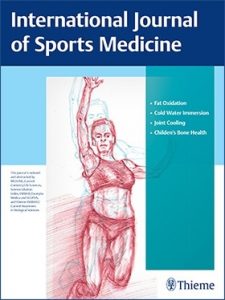Publications

Fatigue-Induced Alterations of the Patellar Tendon in Elite Sprint Track Cyclists
Authors: Sebastian Klich 1, Kamil Michalik 2, Jolanta Rajca 3, Krzysztof Ficek 3, 4, Cesar Fernandez-de-Las-Penas 5, 6, Adam Kawczynski 7, Pascal Madeleine 8
Affiliations:
- Department of Paralympic Sport, Wroclaw University of Health and Sport Sciences, Wroclaw, Poland
- Department of Human Motor Skills, Wroclaw University of Health and Sport Sciences, Wrocaw, Poland
- Galen Orthopedic Center, Bierun, Poland
- Department of Physiotherapy, Jerzy Kukuczka Academy of Physical Education In Katowice, Katowice, Poland
- Department of Physical Therapy, Occupational Therapy, Rehabilitation and Physical Medicine, Universidad Rey Juan Carlos, Alcorcon, Spain
- Catedra Institucional En Docencia, Clinica E Investigacion En Fisioterapia: Terapia Manual, Puncion Seca Y Ejercicio Terapeutico, Universidad Rey Juan Carlos, Alcorcon, Spain
- Department of Biomechanics and Sport Engineering, Gdansk University of Physical Education and Sport, Gdansk, Poland
- Health Science and Technology, Aalborg University, Aalborg, Denmark
Journal: International Journal of Sports Medicine - January 2023 (DOI: 10.1055/a-2018-2781)
-
Field & Applications:
- Sport
- Fatigue / Overtraining
- Injury prevention
The study aims to investigate morphological and mechanical properties and echogenicity of the patellar tendon (PT) after acute fatigue-induced alterations in sprint track cyclists.
Fourteen elite track cyclists participated in this study. The exercise protocol consisted of three (on a distance of 62.5 m), one (125 m and 250 m) maximal start accelerations, and sprints from the standing start. Immediately after testing all measurements, PT stiffness and thickness were set at 5-10-15-20 mm distal from the apex of the patella and 5-10 mm proximal to the tibial tuberosity. CSA was set at proximal, middle, and distal, while echogenicity was at proximal and distal points.
The results showed significant increases in PT stiffness at all reference points after start acceleration (p<0.001). PT thickness showed similar results as for stiffness, however except for location placed at TT-5 (p<0.001). CSA increased significantly in proximal, middle, and distal regions (p<0.001), while echogenicity of tendon increased in proximal and distal regions (p<0.001) after start acceleration.
Regional-dependent alterations of PT thickness and stiffness may be related to anatomical and physiological mechanisms due to acute isometric contraction in the initial phase of standing start. Tendon echogenicity might be also useful in monitoring tendon mechanical properties and defining acute fatigue-induced changes.
Keywords: stiffness, thickness, overloading, ultrasonography, myotonometry
Standing start accelerations, as one of the principal training exercises, may lead to gathering post-exercise alterations in morphological (tendon thickness, CSA), mechanical properties (stiffness), and echogenicity of PT. Regional-dependent alterations of PT thickness and stiffness may be related to anatomical and physiological mechanisms due to acute isometric contraction in the initial phase of standing start. However, the anatomical characteristics of PT might be associated with an adaptation to different loadings. Tendon echogenicity might be also useful in monitoring tendon mechanical properties and defining acute fatigue-induced changes. In general, those measurement procedures could be used in the early evaluation of overuse syndrome.


